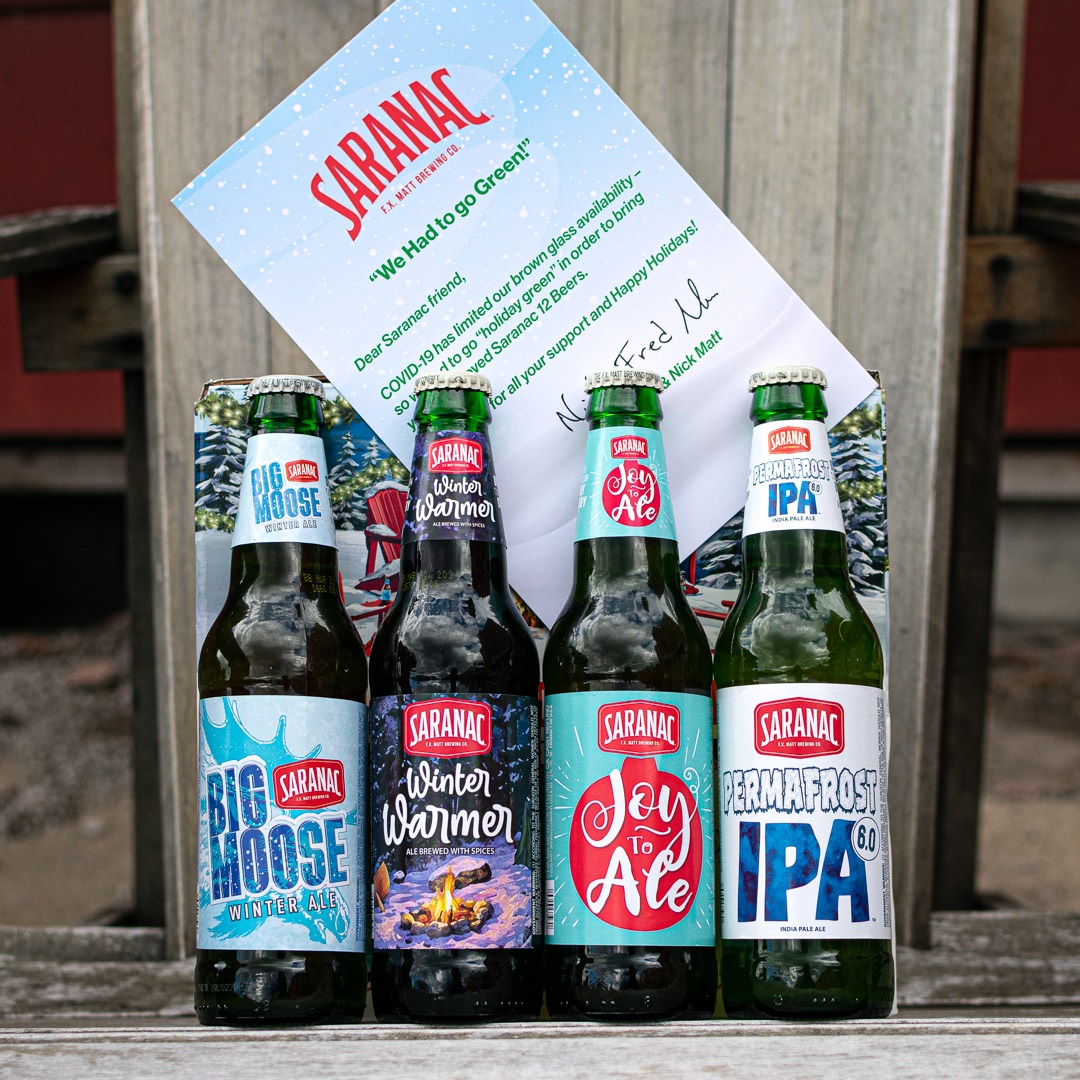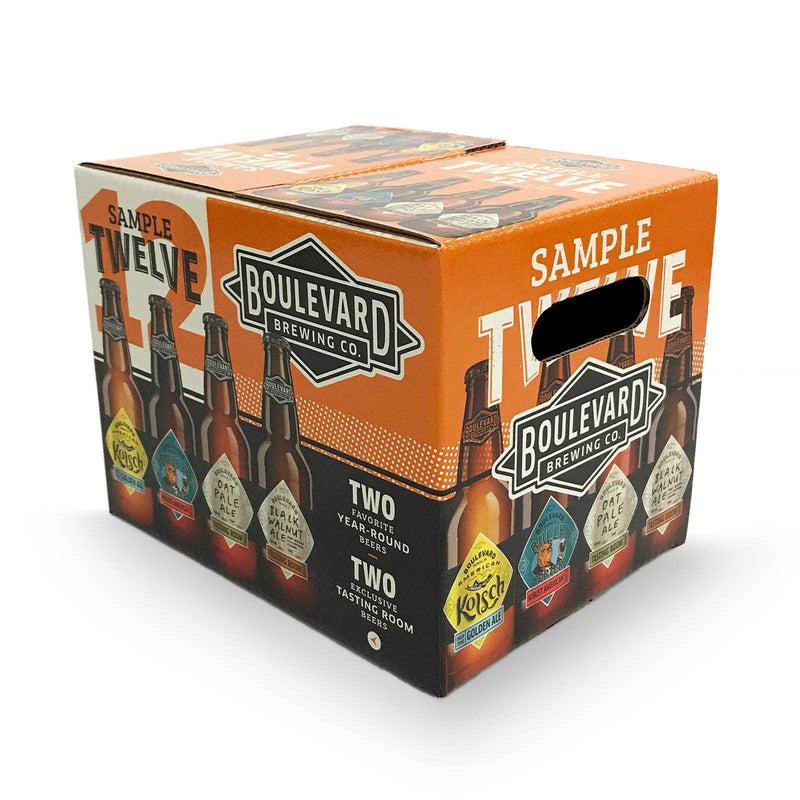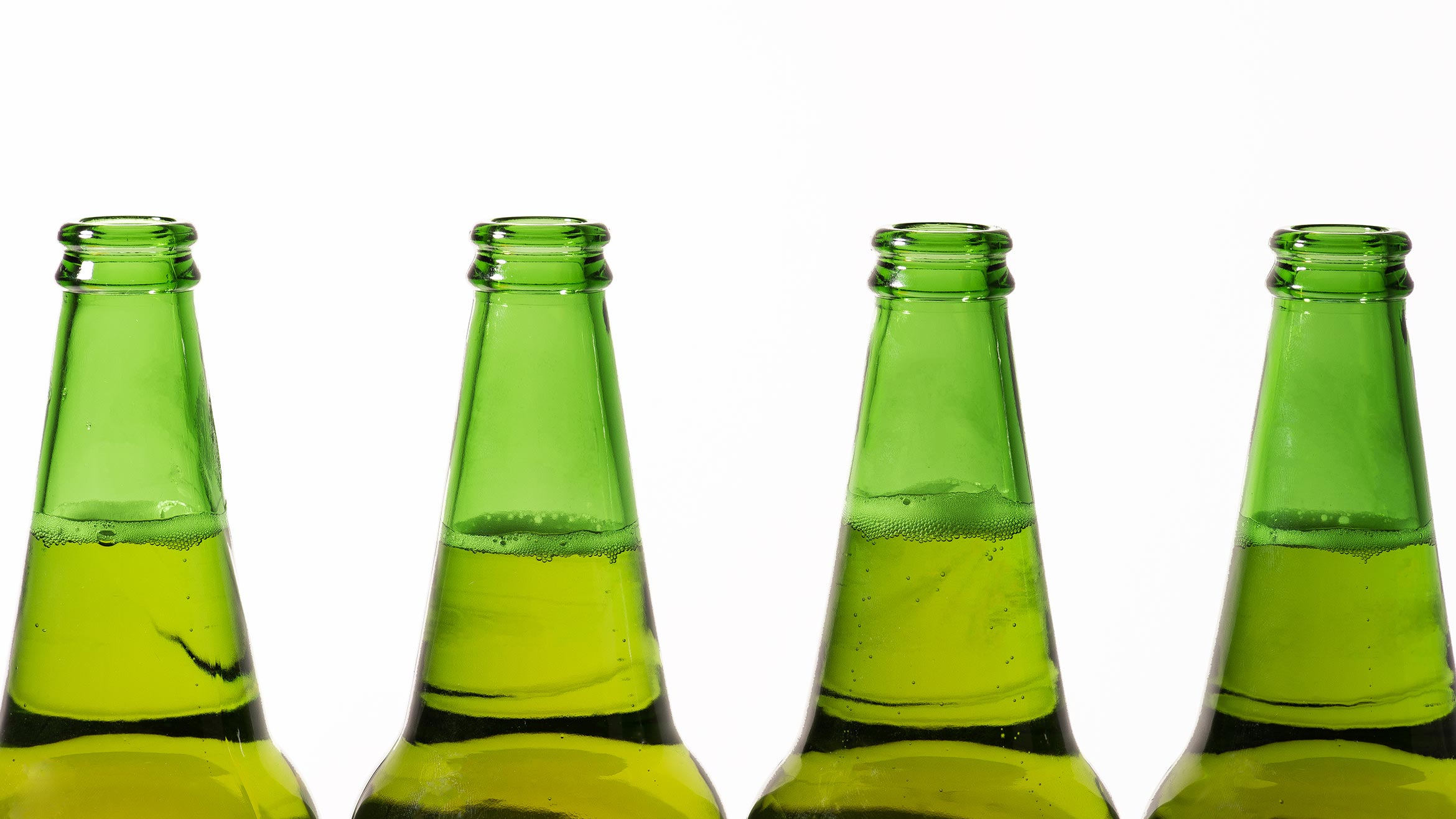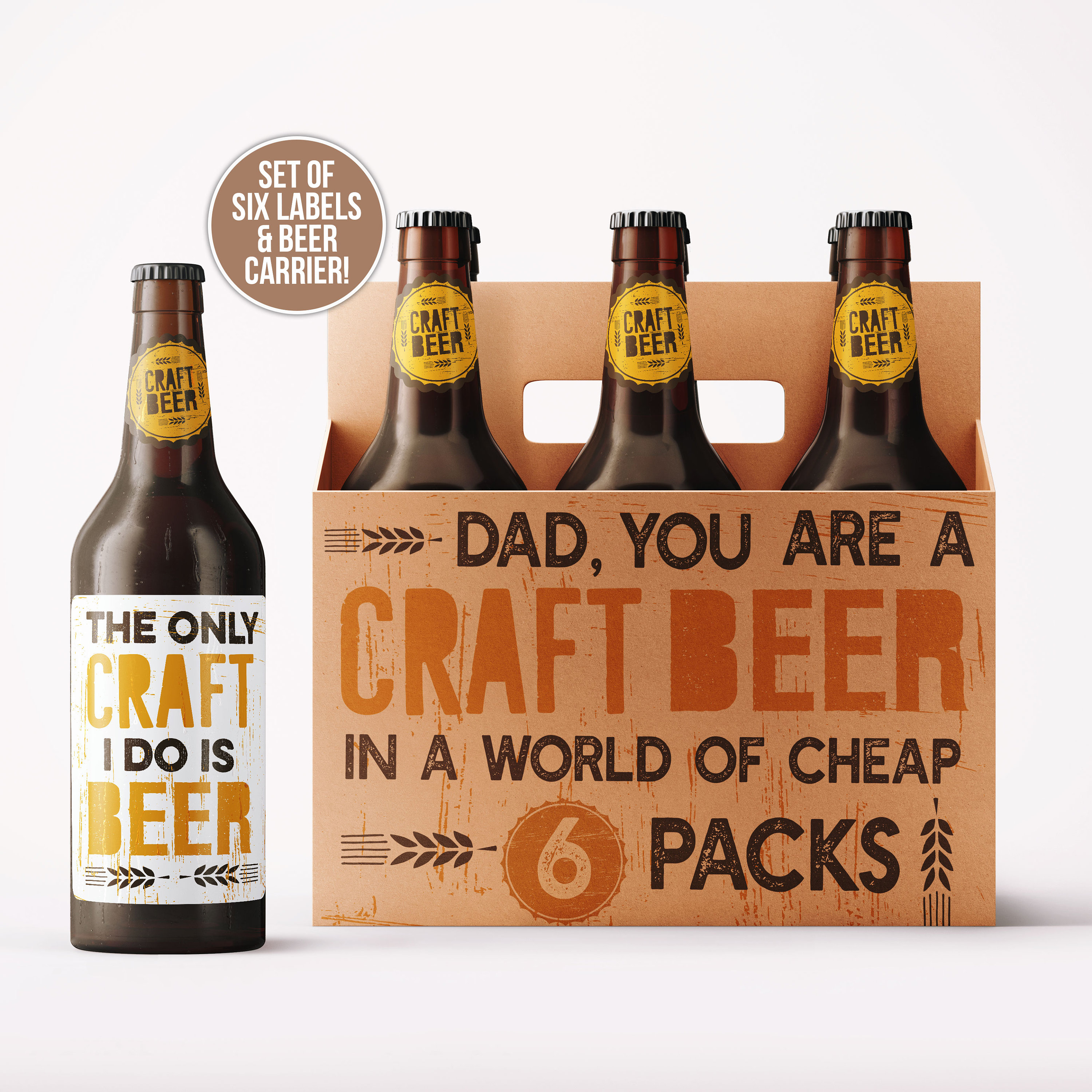Importance Of Beer Packaging

The packaging of beer plays a crucial role in the success of a brewery. It not only protects the beer from light, oxygen, and potential contaminants but also serves as a marketing tool. The choice of packaging can convey the brand’s image, reflect the beer’s quality, and attract consumers’ attention. Additionally, packaging materials such as green bottles offer environmental benefits by requiring less energy to produce. Therefore, breweries must carefully consider their beer packaging choices to ensure the beer’s integrity and appeal to customers.
Benefits Of Different Beer Packaging Choices
Different beer packaging choices offer various benefits for breweries. For example, green bottle packaging provides a distinct appearance that captivates consumers and enhances branding opportunities. It also pays homage to traditional brewing practices, giving the beer a sense of authenticity. On the other hand, brown bottles are known for their superior light protection, preserving the beer’s quality and taste. Clear bottles allow for visibility and showcase the beer’s color, enticing consumers. Each packaging choice has its advantages, allowing breweries to choose the option that best suits their brand and product.
Impact Of Packaging On Consumer Perception
The packaging of a product plays a vital role in consumer perception. In the case of beer, the choice of packaging, such as green bottles, can significantly influence how consumers perceive and interact with the product. Research suggests that packaging design factors, such as bottle color, shape, and labeling, affect consumer perceptions of quality and liking for beers. The visual appeal and aesthetics of the packaging can create a positive first impression and shape consumer expectations about the taste and quality of the beer.
Green Beer Bottles In The Beer Industry

Green beer bottles have been a longstanding choice in the beer industry. They have become synonymous with craft beer and are often seen as a symbol of quality and innovation. Craft breweries often opt for green bottles to differentiate themselves from mainstream brands. However, it is important to note that green bottles have both advantages and disadvantages. While they offer a distinct and unique look, they are more prone to light damage which can affect the taste of the beer. Brewers should carefully consider the pros and cons before deciding to use green bottles for their beers.
Historical Use Of Green Beer Bottles
Green beer bottles have a rich historical significance in the beer industry. In the early days, breweries began using green bottles as a way to set their beers apart from others, as clear and brown bottles were more prevalent. This choice of packaging quickly became associated with certain beer styles, particularly those originating in Germany. As craft breweries emerged, they recognized the enduring appeal of green bottles and embraced them as a symbol of tradition and craftsmanship. Today, green beer bottles continue to be cherished for their historical connection to the brewing world.
Advantages And Disadvantages Of Green Beer Bottles
Green beer bottles offer several advantages in packaging craft beers. Firstly, the distinct green color sets them apart from clear and brown bottles, making them visually appealing and enhancing brand recognition. Secondly, green glass provides better protection against UV light, which can be harmful to the beer’s flavor and aroma. However, green glass does allow some light to penetrate, potentially impacting the beer’s shelf life and causing “skunking”. Breweries using green bottles must take extra precautions to minimize light exposure and ensure beer quality.
Brown Vs. Green Beer Bottles

When it comes to beer packaging, the choice between brown and green bottles is a common debate among breweries. Brown bottles have traditionally been the go-to option for many beer brands due to their ability to block out more light and protect the beer from skunking. Green bottles, on the other hand, offer a distinct and visually appealing packaging option that can help showcase a brewery’s unique brand identity. However, it’s important to note that green bottles do allow more light to penetrate, potentially affecting the beer’s shelf life. Breweries must carefully consider the pros and cons of each option before deciding which type of bottle is best suited for their beers.
Comparison Of Brown And Green Beer Bottles
When it comes to choosing between brown and green beer bottles, there are important factors to consider. Brown bottles have been favored for their ability to block out more light, protecting the beer from skunking and maintaining its flavor and quality for a longer shelf life. Green bottles, while visually appealing and often associated with craft beer, allow more light to penetrate, potentially affecting the beer’s taste and stability. Breweries must carefully weigh the visual impact and brand identity of green bottles against the increased risk of light damage and choose the option that best suits their beers.
How Bottle Color Affects Beer Quality
The color of beer bottles plays a crucial role in determining the quality of the beer. Brown bottles are highly preferred due to their ability to block out more light, protecting the beer from becoming lightstruck and maintaining its flavor. On the other hand, green bottles, while visually appealing, allow more light to penetrate, increasing the risk of light damage and potentially affecting the taste and stability of the beer. Therefore, breweries must carefully consider the impact of bottle color on beer quality when making packaging choices.
Clear Beer Bottles And Their Role

Clear beer bottles have been a traditional choice in the beer industry. While they may not be as popular as brown or green bottles, they still have a role to play. Clear bottles allow consumers to see the beer’s color and clarity, which can enhance their visual appeal. However, the transparency of clear bottles exposes the beer to light, which can lead to lightstruck flavors and a decrease in shelf life. As a result, clear bottles are often used for light, hop-forward beers that are meant to be consumed fresh and have a shorter shelf life.
Factors Influencing The Use Of Clear Beer Bottles
Factors influencing the use of clear beer bottles include the desire to showcase the beer’s color and clarity. Clear bottles allow consumers to visually appreciate the beer before they even taste it, enhancing its appeal. Additionally, clear bottles are often chosen for light, hop-forward beers that are meant to be consumed fresh, as they have a shorter shelf life. However, the transparency of clear bottles exposes the beer to light, which can lead to lightstruck flavors and a decrease in shelf life compared to brown or green bottles.
Perceptions Of Beer Quality In Clear Bottles
When it comes to beer quality, perceptions can play a significant role in consumer preferences. While clear beer bottles have their advantages in terms of showcasing the beer’s color and clarity, some consumers may have concerns about the potential for lightstruck flavors and decreased shelf life compared to brown or green bottles. This perception can impact their willingness to purchase beer packaged in clear bottles. Breweries looking to use clear bottles should consider consumer perceptions and weigh them against the desired visual appeal and freshness of the beer.
Other Beer Packaging Options

In addition to traditional glass bottles, the beer industry has seen a rise in other packaging options. Aluminum cans have become increasingly popular due to their durability, portability, and ability to block out light. They also offer a great canvas for creative label and design choices. Additionally, there has been an increase in the use of kegs and growlers for consumption at breweries and taprooms, allowing beer enthusiasts to enjoy freshly poured beer straight from the source. These alternative packaging options cater to different consumer preferences and offer unique experiences for beer lovers.
Exploring Other Beer Packaging Materials
When it comes to beer packaging, there are alternative materials to consider beyond traditional glass bottles. One popular option is aluminum cans, which offer benefits such as durability, portability, and the ability to block out light, which helps preserve the beer’s freshness. Aluminum cans also provide a canvas for unique label designs and can be easily recycled. Additionally, kegs and growlers have gained popularity, allowing beer enthusiasts to enjoy fresh beer straight from the source at breweries and taprooms. These alternative packaging materials cater to different consumer preferences and offer exciting possibilities for the beer industry.
Innovations In Beer Packaging Design
Innovations in beer packaging design have been driven by the need for breweries to stand out in a competitive market. Craft beer brands have been exploring creative and unique ways to package their products, using eye-catching designs, materials, and labeling techniques. One example is the use of minimalist and modern labels that reflect the brand’s identity and personality. Other innovations include resealable cans, environmentally-friendly packaging materials, and interactive packaging that engages consumers. These design innovations not only attract attention on store shelves but also contribute to the overall beer-drinking experience.
Conclusion

In conclusion, the choice of beer packaging is a crucial factor for craft beer brands seeking to stand out in a competitive market. Green beer bottles offer a unique and distinctive appearance that can effectively convey a brand’s commitment to quality and innovation. While brown bottles are traditionally more common, green bottles provide opportunities for branding and design creativity. However, it’s essential for breweries to carefully consider the impact of packaging choices on consumer perception and maintain a balance between aesthetics and beer quality.
Summary Of The Impact Of Beer Packaging Choices
The choice of beer packaging has a significant impact on the perception of craft beer brands. Green beer bottles, in particular, have become a symbol of craft beer innovation due to their unique appearance and association with sustainability. While brown bottles are more commonly used, the use of green bottles allows brands to stand out and convey their commitment to quality and creativity. However, breweries must strike a balance between aesthetics and beer quality to ensure consumer satisfaction. Overall, beer packaging plays a crucial role in brand differentiation and consumer perception.
Recommendations For Breweries
Breweries should carefully consider their beer packaging choices to align with their brand identity and meet consumer expectations. Here are some recommendations for breweries:
- Conduct market research: Understand consumer preferences and trends in beer packaging to make informed decisions.
- Prioritize quality: Regardless of packaging choice, focus on maintaining beer quality through proper storage and transportation methods.
- Embrace sustainability: Opt for packaging materials that are eco-friendly and can be easily recycled, such as green bottles or alternative materials like cans or kegs.
- Stand out with branding: Use packaging design to differentiate your brand, making it visually appealing and recognizable among competitors.
- Communicate brand values: Clearly convey your commitment to quality, creativity, and sustainability through packaging design and messaging.
By considering these recommendations, breweries can effectively package their beers to attract consumers and enhance their brand reputation.
Frequently Asked Questions About Beer Packaging

Q: Why are some beers packaged in green bottles?
A: Beers packaged in green bottles are typically done so for two main reasons. First, the green glass helps to protect the beer from harmful UV light, which can lead to a skunky flavor. Second, green bottles have a traditional and distinctive aesthetic that appeals to consumers. Brewers who choose to package their beers in green bottles must ensure that their products are stored and transported properly to maintain the quality and taste of their brews.
FAQ About Beers In Green Bottles: Examining Beer Packaging Choices
Q: Why are green bottles commonly used for beer packaging?
A: Green bottles are often chosen for beer packaging due to their ability to block out some light, which helps in minimizing the beer’s exposure to harmful UV rays that can cause skunking and affect the beer’s taste.
Q: Are there any downsides to using green bottles for beer packaging?
A: Yes, green bottles still allow some light to penetrate, unlike brown bottles which offer better protection against light exposure. This can lead to quicker spoilage of the beer stored in green bottles.
Q: How does beer packaging impact the overall taste and quality of the beer?
A: The choice of beer packaging, such as green bottles, can significantly influence the shelf life and taste of the beer. Exposure to light, oxygen, and temperature variations through the packaging can affect the beer’s flavor and quality.
Q: Are there alternative packaging choices that provide better protection for beer?
A: Yes, brown bottles are widely preferred for beer packaging as they offer superior protection against light exposure. Canned beer is also an excellent choice as it provides complete protection from light and oxygen, preserving the beer’s quality.
Q: Can beer packaging impact the sustainability of the product?
A: Yes, the choice of packaging material can affect the sustainability of beer production. Opting for recyclable materials, such as aluminum cans or glass bottles, and promoting recycling initiatives can help reduce the environmental impact of beer packaging choices.

Let’s be honest—Parma, OH has its fair share of neighborhood joints, as do the surrounding Cleveland suburbs. There are bar food offerings, happy hour, and an enjoyable environment in which to watch the Tribe and Browns.
With Sidekicks Tavern, though, you get all that and then some. You get a bar menu, a warm staff, and a great group of fun customers to hang with.
In the words of one of our favorite regulars, Sidekicks is a hidden gem.